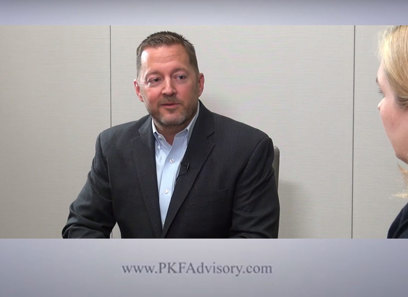The Impact of Mergers and Acquisitions on Market Characteristics and Competition
The landscape of mergers and acquisitions presents a complex interplay between promoting development and possibly weakening competitive stability within markets. As companies pursue tactical positionings to enhance efficiency and development, the ramifications on customer selection and market rates warrant mindful examination.
Introduction of Mergers and Acquisitions
Mergers and purchases (M&A) play an essential role fit the landscape of modern business, as companies look for to enhance their one-upmanship and attain calculated goals. M&A deals include the debt consolidation of business or possessions through numerous financial transactions, including mergers, where two firms integrate to develop a new entity, and acquisitions, where one firm acquisitions one more outright. These activities are driven by a myriad of aspects, such as the search of synergies, diversification of item offerings, and the need to enter new markets.
The M&A process usually involves several phases, consisting of calculated planning, due diligence, negotiation, and assimilation (Emerging Market Opportunities). Business conduct comprehensive evaluations to recognize potential targets that straighten with their growth strategies and assess the financial and operational implications of a transaction. Regulative considerations additionally play a vital role, as antitrust regulations are developed to stop monopolistic methods that can hurt competition
As companies browse the complexities of M&A, the results can significantly affect stakeholders, including staff members, customers, and shareholders. Understanding the characteristics of M&A is crucial for assessing their effects within the more comprehensive context of market behavior and affordable placing.
Favorable Effects on Market Dynamics
The debt consolidation of business through purchases and mergers can lead to substantial favorable impacts on market dynamics. This performance can equate into reduced costs for consumers, fostering an extra competitive market environment.

Moreover, boosted market share arising from mergings can supply firms with higher bargaining power with providers and suppliers, assisting in enhanced terms and conditions that can profit the total supply chain.
Adverse Repercussions for Competition

Furthermore, the removal of competitors with purchases can suppress technology. When key players merge, smaller firms may have a hard time to contend, resulting in a homogenization of product or services. The resultant absence of competitors can develop an atmosphere where staying business have less incentive to purchase r & d.
Furthermore, mergings can produce obstacles to entrance for brand-new firms, as the merged entity might take advantage of its improved resources to control the marketplace. This can discourage prospective entrants, therefore restricting competition and innovation in the lengthy term.
Eventually, more information while purchases and mergers can use calculated advantages, their possible to weaken competition requires careful factor to consider of their wider implications on the marketplace dynamics. The equilibrium between development and affordable honesty stays a vital concern in examining such corporate approaches.
Regulative Factors To Consider and Oversight
Regulative structures play an important duty in shaping the landscape of procurements and mergers, making certain that market dynamics continue to be competitive and reasonable. These frameworks are created to avoid anti-competitive habits and to shield consumer rate of interests. Regulatory bodies, such as the Federal Profession Commission (FTC) in the United States and the European Payment in the EU, assess recommended procurements and mergers based upon their possible impact on competitors within the market.
The evaluation procedure involves a thorough investigation of the marketplace share, potential for monopolistic methods, and the total economic ramifications of pop over to this web-site the purchase. Regulators typically enforce conditions or require divestitures to alleviate problems over reduced competition, guaranteeing that the joined entity does not control the marketplace unjustly.
This collective technique assists to promote a balanced governing atmosphere that promotes development while safeguarding competitive techniques. Inevitably, efficient regulative considerations are important in maintaining market honesty and motivating healthy competitors in the face of progressing company landscapes.
Study and Real-World Instances
Often, case studies of notable mergings and procurements highlight the extensive effects these purchases can carry market characteristics. The 2000 merger between AOL and Time Detector works as an archetype, where the expected synergies dropped short, causing an extreme decline in investor value. This instance highlights exactly how cultural imbalances and overestimation of market potential can disrupt competition.
In contrast, the procurement of WhatsApp by Facebook in 2014 exemplifies an effective integration that improved the interaction landscape. Emerging Market Opportunities. Facebook leveraged WhatsApp's customer base to boost its solution offerings, successfully raising its market prominence while preserving competition in the messaging sector
An additional substantial case is the merging of Exxon and Mobil in 1999, which produced one of the globe's official site biggest oil companies. This loan consolidation brought about higher effectiveness but increased problems about lowered competition in the power market, prompting governing analysis.
These instances highlight the complicated interplay in between purchases and mergers and market dynamics, showcasing both the potential benefits and challenges that can develop, ultimately shaping affordable landscapes throughout sectors.
Verdict
Mergers and acquisitions play a critical function in shaping market dynamics and competitors. While they can result in boosted efficiencies and advancement, they likewise pose dangers such as minimized competition and greater consumer costs. Reliable regulative oversight is necessary to make sure that the advantages of M&An activities are made best use of while minimizing adverse effect on market competition. A well balanced strategy can aid protect consumer well-being and promote a competitive landscape that urges both growth and innovation.
One major problem is the capacity for reduced market competitors, as mergers commonly lead to the combination of market power amongst fewer gamers. Regulatory bodies, such as the Federal Trade Payment (FTC) in the United States and the European Commission in the EU, examine proposed purchases and mergings based on their potential effect on competitors within the market.

Mergers and procurements play a critical role in forming market characteristics and competition. Efficient regulatory oversight is crucial to make sure that the benefits of M&A tasks are made best use of while alleviating negative influences on market competition.